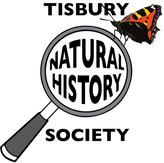|
In September, we had the last field trip of the past season and the first talk of the new season.
The talk was on Rewilding archaeology, and was given by Ed Treasure, an environmental archaeologist at Wessex Archaeology. This was an interesting follow-up to our visit to Underhill Wood Nature Reserve, which some of us were lucky to be able to visit in April. Ed gave us a thought-provoking talk, starting with two definitions, one for environmental archaeology (the study of human and environmental interactions) and for rewilding (the reinstatement of natural processes, learning from the past), explaining how archaeology can be made relevant to approach current problems. Ed went on to explain why archaeological data, particularly palaeoenvironmental reconstruction, is relevant for the current interest in rewilding and acknowledged there are many ways of rewilding, in between two poles of "do nothing" and "do lots". Less than 1% of UK land is explicitly dedicated to rewilding, and most detailed baseline studies go back just 50 years. For example, what is officially referred to as ancient woods are areas of woodland that have persisted for just 400 years: 1600 in England and Wales, and 1750 in Scotland. This is hardly anything from the perspective of archaeology! Taking archaeological evidence into account, baselines can be brought back to several millennia ago, but the key question we need to ask ourselves as potential rewilders is, which specific moment of the past do we want to restore? One point of Ed's talk that may surprise our members is that archaeological evidence shows there is no true native woodland remaining in Britain. Although there are areas where woodland has been continuously present since the Early Holocene (the period after the last glaciation), the nature of this woodland has changed considerably. Ed also discussed the concept of wildwood or primeval forest, the woodland existing for a period after the last glaciation, from 12,000 years ago. The traditional view of this wildwood was of a closed canopy wood with some small clearances, until the first farming societies that started opening up the landscape. Ed referred to the first critique of this traditional view, Frans Vera's model, by which the primeval wood would have been in constant flux, with a mosaic of habitats "managed" by a range of large herbivores and beavers roaming in the landscape and creating openings. Vera's model is highly popular - it is one of the foundational ideas behind the rewilding project at Knepp, with which many of our members are familiar - and while the idea of the fluctuating woodland cover still holds true, the model has some problems that have arisen when contrasting some of its underlying hypotheses with the archaeological data. For example, it has become evident that large herbivores and beavers cannot be the only factors in creating openings in the landscape because most of these were absent from Ireland (unlike in Britain, where they were present) in the prehistoric past and environmental archaeological data tells us that Britain's and Ireland's landscapes were very similar. The role played by other factors, like carnivores, humans and fires for instance, are still under investigation. Another example given by Ed, this time closer to us, was the current development plan for the New Forest. Although this plan does not explicitly mentions "rewilding", it essentially proposes something of the sort, because it aims to make the NF more sustainable and reinstate the natural landscape of beech woodland and heathland. Ed highlighted that heathlands were created in the Bronze Age, a mere 4-3,000 years ago and that, although beech is native to the UK, beech woodlands only became common in the medieval period as a result of human management. So restoring those landscapes may be great to provide habitats for a range of wildlife, but are they truly "natural"? In summary, Ed didn't necessarily give us answers to many questions but I think this is one of the highlights of his talk. I am an environmental archaeologist too and I feel very uncomfortable when other archaeologists make big statements about the past that are largely interpretative and based on a series of disconnected facts; archaeological knowledge, like in many other disciplines, is not static and made of unsinkable truths. Ed rightly relativized the possible pathways for rewilding (it all depends on what specific time-landscape we want to restore) and he demonstrated the fluctuating nature of archaeological knowledge (and, therefore, of our understanding of the nature of the landscapes in the past). Rewilding can be a heated topic, but there isn't necessarily a right or wrong way of going about it, it just depends on giving careful thought to what we want to have for our baseline. You don't need to be a big landowner to be able to rewild anything, you can start with your small patch of concrete in the backyard or even with your windowsill. You can find out more about rewilding on the Rewilding Britain website. by Inés Lopez-Doriga Comments are closed.
|
Photo: Avocets (Izzy Fry)
The headers display photos taken by our members. Do get in touch via the Contact Form if you'd like to submit a photo for selection.
Archives
May 2024
Categories
All
|

 RSS Feed
RSS Feed